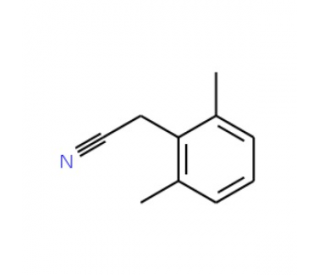详细说明
Species Reactivity
Mouse
Specificity
Detects mouse IL‑33 Propeptide in direct ELISAs and Western blots. In Western blots, no cross‑reactivity with mature recombinant mouse IL‑33, mature recombinant human (rh) IL-33, or the pro region of rhIL-33 is observed.
Source
Monoclonal Rat IgG 2B Clone # 518017
Purification
Protein A or G purified from hybridoma culture supernatant
Immunogen
E. coli-derived recombinant mouse IL‑33 Propeptide
Met1-Leu108
Accession # Q8BVZ5Formulation
Lyophilized from a 0.2 μm filtered solution in PBS with Trehalose. *Small pack size (SP) is supplied as a 0.2 µm filtered solution in PBS.
Label
Unconjugated
Applications
Recommended
ConcentrationSample
Western Blot
2 µg/mL
See below
Please Note: Optimal dilutions should be determined by each laboratory for each application. are available in the Technical Information section on our website.
Data Examples
Western Blot | Detection of Mouse IL‑33 Propeptide by Western Blot. Western blot shows lysates of mouse peripheral lymph node tissue under reducing (R) and non-reducing (NR) conditions. PVDF membrane was probed with 2 µg/mL Rat Anti-Mouse IL‑33 Propeptide Monoclonal Antibody (Catalog # MAB5010) followed by HRP-conjugated Anti-Rat IgG Secondary Antibody (Catalog # ). A specific band for IL‑33 Propeptide was detected at approximately 30 kDa (as indicated). This experiment was conducted under reducing conditions and using . |
Preparation and Storage
Reconstitution
Reconstitute at 0.5 mg/mL in sterile PBS.
Shipping
The product is shipped at ambient temperature. Upon receipt, store it immediately at the temperature recommended below. *Small pack size (SP) is shipped with polar packs. Upon receipt, store it immediately at -20 to -70 °C
Stability & Storage
Use a manual defrost freezer and avoid repeated freeze-thaw cycles.
12 months from date of receipt, -20 to -70 °C as supplied.
1 month, 2 to 8 °C under sterile conditions after reconstitution.
6 months, -20 to -70 °C under sterile conditions after reconstitution.
Background: IL-33
IL-33, also known as NF-HEV and DVS 27, is a 30 kDa proinflammatory protein that may also regulate gene transcription (1‑3). DVS 27 was identifed as a gene that is up‑regulated in vasospastic cerebral arteries (1). NF-HEV was described as a nuclear factor that is preferentially expressed in the endothelial cells of high endothelial venules relative to endothelial cells from other tissues (2). IL-33 was identified based on sequence and structural homology with IL-1 family cytokines (3). DVS 27, NF-HEV, and IL-33 share 100% amino acid sequence identity. IL-33 is constitutively expressed in smooth muscle and airway epithelia. It is up‑regulated in arterial smooth muscle, dermal fibroblasts, and keratinocytes following IL-1 alpha or IL-1 beta stimulation (1, 3). Similar to IL-1, IL-33 can be cleaved in vitro by caspase-1, generating an N-terminal fragment that is slightly shorter than the C-terminal fragment (3, 4). The N-terminal portion of full length IL-33 contains a predicted bipartite nuclear localization sequence and a homeodomain-like helix-turn-helix DNA binding domain. By immunofluorescence, full length IL-33 localizes to the nucleus in HUVECs and transfectants (2). The C-terminal fragment, corresponding to mature IL-33, binds and triggers signaling through mast cell IL-1 R4/ST2L, a longtime orphan receptor involved in the augmentation of Th2 cell responses (3, 5‑7). A ternary signaling complex is formed by the subsequent association of IL-33 and ST2L with IL-1R AcP (8). Stimulation of Th2 polarized lymphocytes with mature IL-33 in vitro induces IL-5 and IL-13 secretion (3). In vivo administration of mature IL-33 promotes increased production of IL-5, IL-13, IgE, and IgA, as well as splenomegaly and inflammatory infiltration of mucosal tissues (3). Full length and mature mouse IL-33 share approximately 55% and 90% aa sequence identity with human and rat IL-33, respectively. Mouse IL-33 shares less than 25% aa sequence identity with other IL-1 family proteins.
References:
Onda, H. et al. (1999) J. Cereb. Blood Flow Metab. 19:1279.
Baekkevold, E.S. et al. (2003) Am. J. Pathol. 163:69.
Schmitz, J. et al. (2005) Immunity 23:479.
Black, R.A. et al. (1989) J. Biol. Chem. 264:5323.
Xu, D. et al. (1998) J. Exp. Med. 187:787.
Lohning, M. et al. (1998) Proc. Natl. Acad. Sci. 95:6930.
Dinarello, C.A. (2005) Immunity 23:461.
Chackerian, A.A. et al. (2007) J. Immunol. 179:2551.
Long Name:
Interleukin 33
Entrez Gene IDs:
90865 (Human); 77125 (Mouse)
Alternate Names:
C9orf26; C9orf26chromosome 9 open reading frame 26 (NF-HEV); DKFZp586H0523; DVS27; DVS27-related protein; IL1F11; IL-1F11; IL33; IL-33; interleukin 33; Interleukin-1 family member 11; interleukin-33; NFHEV; NF-HEV; NF-HEVNFEHEV; Nuclear factor from high endothelial venules; RP11-575C20.2











 粤公网安备44196802000105号
粤公网安备44196802000105号